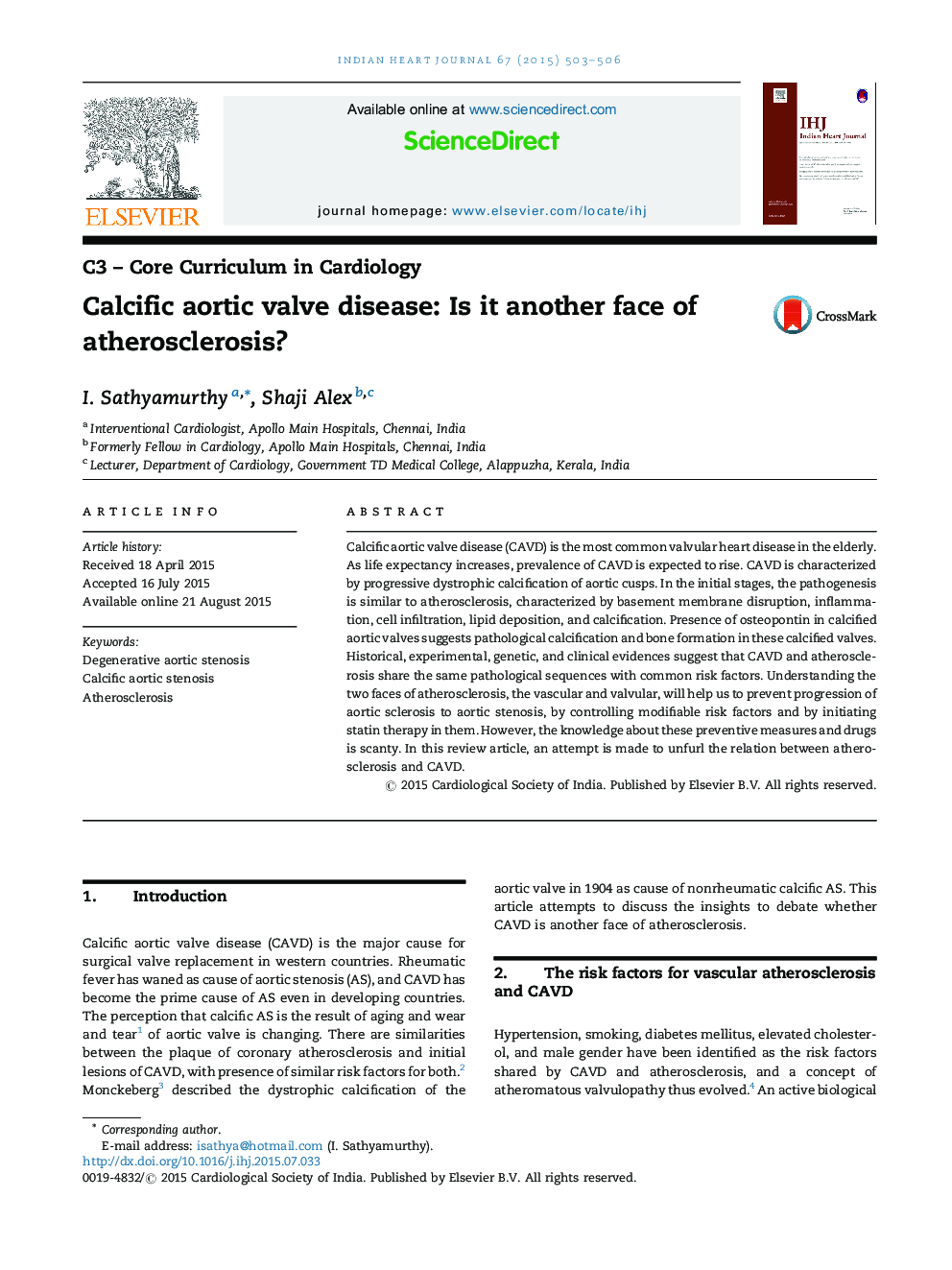| Article ID | Journal | Published Year | Pages | File Type |
|---|---|---|---|---|
| 2927505 | Indian Heart Journal | 2015 | 4 Pages |
Calcific aortic valve disease (CAVD) is the most common valvular heart disease in the elderly. As life expectancy increases, prevalence of CAVD is expected to rise. CAVD is characterized by progressive dystrophic calcification of aortic cusps. In the initial stages, the pathogenesis is similar to atherosclerosis, characterized by basement membrane disruption, inflammation, cell infiltration, lipid deposition, and calcification. Presence of osteopontin in calcified aortic valves suggests pathological calcification and bone formation in these calcified valves. Historical, experimental, genetic, and clinical evidences suggest that CAVD and atherosclerosis share the same pathological sequences with common risk factors. Understanding the two faces of atherosclerosis, the vascular and valvular, will help us to prevent progression of aortic sclerosis to aortic stenosis, by controlling modifiable risk factors and by initiating statin therapy in them. However, the knowledge about these preventive measures and drugs is scanty. In this review article, an attempt is made to unfurl the relation between atherosclerosis and CAVD.
